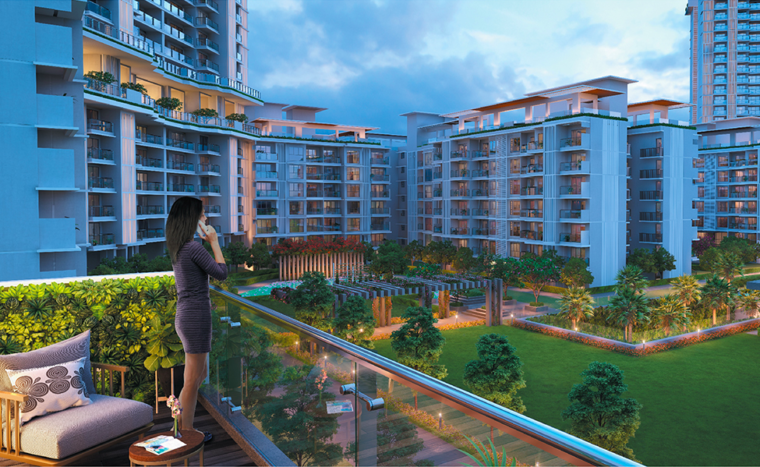According to recent reports by all leading real estate consultants, India’s luxury homes segment has witnessed a strong comeback since the Covid-19 pandemic. How did this happen, when the pandemic actually caused an economic recession? There are several reasons.
Massive HNI Interest
Covid-19 brought about a lot of uncertainty in Indians’ lives. In times of insecurity, people tend to seek certainty wherever they can find it. In India, one primary means to safeguard financial and family security is by buying a home. This dynamic is not limited to the middle class – even HNIs follow this pattern. India’s wealthy people bought more luxury homes in the last 2.5 years than in any other period before the pandemic.
Secondly, because of a prolonged slowdown in the Indian luxury homes market before the pandemic, prices were quite low when the pandemic hit. It is a mistake to assume that the wealthy do not look for bargains, because many became rich by watching the markets and investing their money wisely. There were very good deals to be had on the luxury homes market in a period of extreme uncertainty, and wealthy buyers reacted quickly.
The Middle Class Upgrades
But HNIs were not the only buyer segment that began to populate the luxury homes market. The pandemic had brought about a brand-new way of living and working in India – work from home. When we speak of Indian luxury homes, this does not only include palatial properties in hyper-expensive areas. In this densely populated country, luxury is primarily a function of space. Because of this, properties which offer extra space are technically also luxury homes.
For the upper middle-class, the time to buy such a home could not have been better. Apart from the low prices, they also benefited from very low home loan interest rates. The RBI, tasked with boosting consumption in a decelerated economy, had brought down lending rates to their lowest point in two decades. Even with the latest announcement of a repo rate hike, home loan interest rates remain attractively low.
This combination of positive factors resulted in larger homes becoming affordable to middle-class buyers. But that was not all.
The pandemic’s work from home dynamic also ensured that people no longer had to live as close to their workplaces as possible. In fact, there was a major exodus towards greener, less congested and less polluted areas which offered a safer, healthier – and, in terms of housing prices, also a more cost-effective lifestyle.
A New Life Philosophy
The introduction of ‘revolutionary’ concepts like healthier living and WFH proved to be a winning ticket for luxury homes in India. But along with these concepts also came an entirely new way of thinking. This new way of envisaging a happy life is also part of the reason why we are seeing the ‘Great Resignation’ in India’s IT sector – an industry which thrived throughout the pandemic, and continues to thrive today.
Having discovered a completely fresh way of looking at work-life balance during the pandemic, IT employees (among the highest-paid professionals in India) are no longer content with the arduous daily commute to and from the office.
They have discovered that they can work equally well from home and prefer to continue doing so even if companies insist on them returning to the office. Many would rather switch jobs than give up this new-found freedom.
At the very least, they expect a hybrid work option in which they can spend more time at home than in the office. Today’s new focal point is the home, not the office, and this is where Indians now prefer to invest most of their time, energy – and money. Even in a hybrid work setting, people spend at least 75% of their time at home.
The massive sales increase in luxury townships on Indian cities’ outskirts continues today, at a time when companies want their employees to come back to the office after a low-grade third wave. In two of Pune’s leading townships, the first wave caused a 35% increase in enquiries. During the third wave, sales continued at a 25% faster pace than before the pandemic, and this sales velocity continues even today.
We can safely say that the Covid-19 pandemic changed the course and DNA of Indian real estate like nothing ever before in this country. It realigned Indians’ priorities and gave them a clear picture of what matters the most in their lives. While work is essential, they cannot sacrifice health, comfort and security. Many Indians will do whatever it takes to ensure that they do not compromise any more.
A luxury home, by any definition, gives its owners a safe, comfortable harbour in times of storm. Covid-19 has shaken all our previous illusions of safety and provided a brand-new blueprint for a secured life. Another illusion that went down the drain is the notion that a rented home is as good as an owned home.
After such a devastating health scare, we want to ensure that, come what may, there will not be any more dislocations in their lives. When the homes we buy today are our fortresses against all future disruptions, we will not settle for anything less than complete comfort and security.
This is the foundation on which India’s rebooted luxury homes story will play out in the future.
Related: 8 Tips for first time home buyers that will hopefully come in handy

5 Comments